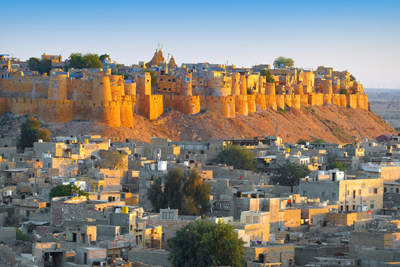
Standing atop the Trikuta Mountains amid the endless golden sands of the Thor desert, at the crossroads of important trade routes and built in 1156 AD by the Rajput Rawal Jaisal from whom it derives its name, the Jaisalmer Fort in Rajasthan is reckoned as the second oldest fort in Rajasthan. It is also believed to be one of the very few living forts in the world as about one-fourth population of the old city still resides within the fort.
For the better part of its 800-year history, the fort itself was the city of Jaisalmer and to accommodate its growing population, the first settlements outside the fort walls probably came up only in the 17th century. Nevertheless, the Jaisalmer fort is often popularly referred to as the Sone Ka Quila or the Golden Fort, as the yellow sandstone walls of the imposing structure shine bright yellow under the radiance of the morning sun and turn into an enchanting shade of honey-gold with the setting of the sun.
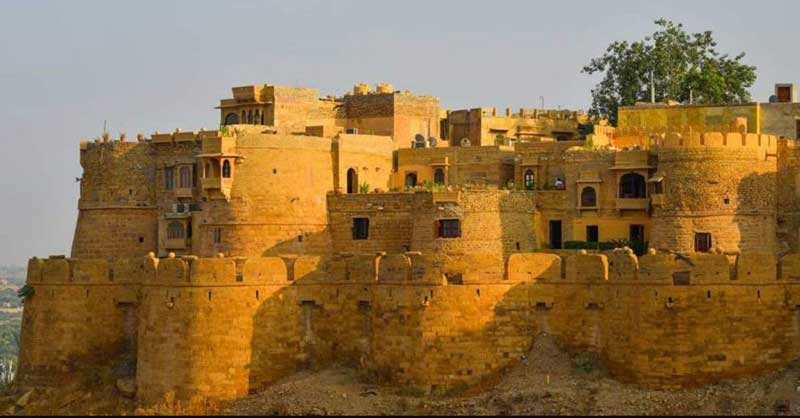
For centuries, the Rajput warriors and traders prospered by levying taxes on the merchants and constructed a network of intricate fortresses to defend themselves and their accumulated wealth. The Bhati Rajputs, originally belonging to the Sialkot area in Punjab, established themselves in Annot, near Jaisalmer and Devaraj, one of the descendants, defeated Nirpabharu, belonging to Lodra Rajput and made Lodruva his capital. Rawal Jaisal was the descendant of Devaraj, who dethroned his nephew Bhojdev to become the ruler and built the Golden Fort of Jaisalmer by demolishing an earlier construction at Lodhruva, which was nothing more than a mud fort. Unfortunately, the Jaisalmer fort had to face a long siege by Sultan Alauddin Khaliji of Delhi, when apprehending imminent defeat, the Rajput women committed their traditional Jauhar or self immolation to keep honour, before being plundered by the invading force, while the men fought to their end.
Although the fort remained abandoned for a few years after that, subsequently it was reoccupied by the surviving Bhattis. In 1541 AD, Mughal Emperor Humayun attacked the Jaiselmer Fort on his way to Ajmer, when Rawal Lunakaran offered his daughter in marriage to his son, Akbar and the control of the fort shifted to the Mughals until 1762, when Rawal Mulraj again took control of it.

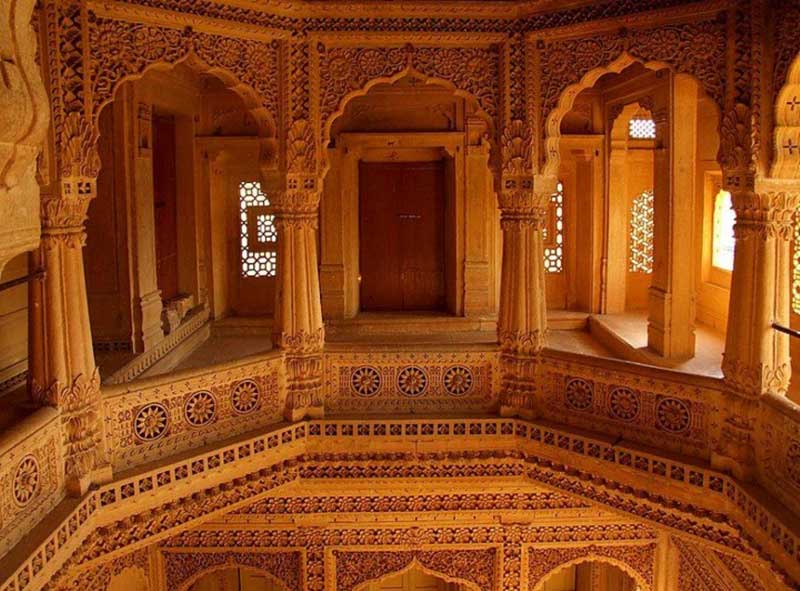
The 1,500 feet (460 m) long and 750 feet (230 m) wide huge structure of the Jaisalmer Fort, built on a hill above a height of 250 feet (76 m) above the surrounding countryside, reflects an amazing fusion of Islamic and Rajput architecture. The base of the fort has a 15 ft (4.6 m) tall wall and its upper bastions form a defensive inner-wall perimeter that is about 4.0 kilometres long. The massive fort is equipped with 99 bastions, of which 92 were built or rebuilt between 1633 and 1647.
The fort has four massive fortified gateways, situated along with the main approach to the citadel, namely Ganesh Pol, Akshaya Pol, Suraj Pol, and Hawa Pol, which were once guarded by canons. While the wells within the fort complex still provide a regular supply of water, the expansive complex of the Jaisalmer Fort contains several narrow winding lanes, which often meet at different points.
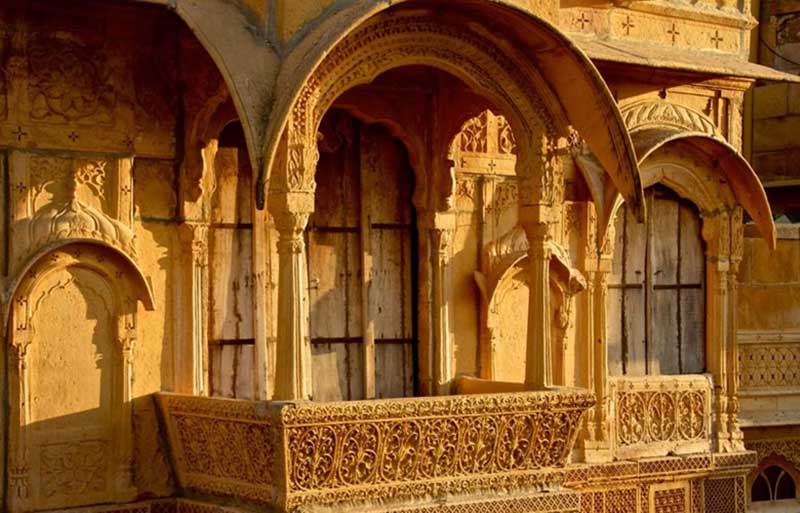
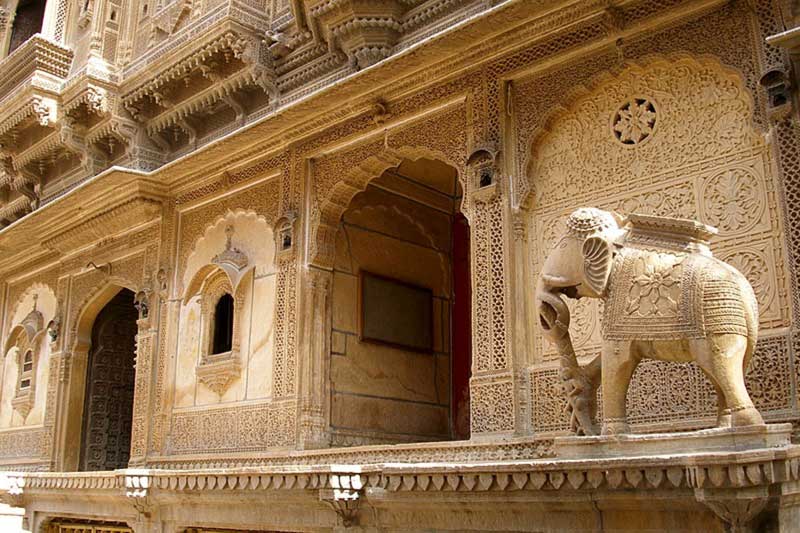
Apart from the Raj Mahal Palace, the former residence of Rawal of Jaisalmer and the Shree Nath Palace, once inhabited by the prime minister of Jaisalmer, the fort houses the Laxminath temple, dedicated to the Hindu God Vishnu and his wife Lakshmi and a group of seven Jain temples dating from the 12th to the 15th centuries. However, unlike most other forts in India, the fort also houses several shops and hotels, along with the beautiful Havelis or private residential buildings, built by wealthy merchants with ornate sandstone carvings. Most of those multi-storey havelies, equipped with several rooms, have decorated windows, archways, balconies and doors of carved wood. While some of the havelies were turned into museums, some others like the Vyal Haveli is still occupied by the descendants of the original builders. Constructed in 1815 with a peacock-shaped roof and numerous balconies, the Moti Mahal, also known as Salam Singh Ki Haweli, is an extremely attractive building, reflecting an amazing architectural beauty. The other noteworthy Havelies include Patwaon Ki Haveli, Nathmal Ki Haveli and Saalam Singh Ki Haveli, where generations continue to live.

The Jaisalmer Fort, with the sprawling towers of its fortifications visible for many miles around, was declared a UNESCO World Heritage Site in 2013, along with 5 other hill forts of Rajasthan, which includes the famous the Chittor Fort.